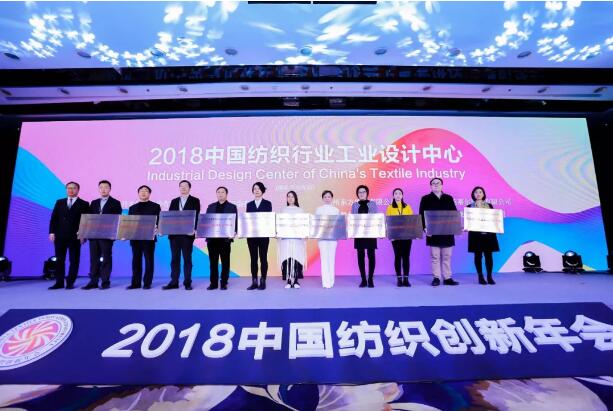What kind of big change will the textile industry usher in?
2018 China Textile Innovation Conference successfully held in Beijing
Dec 12, 2018 | by Flora
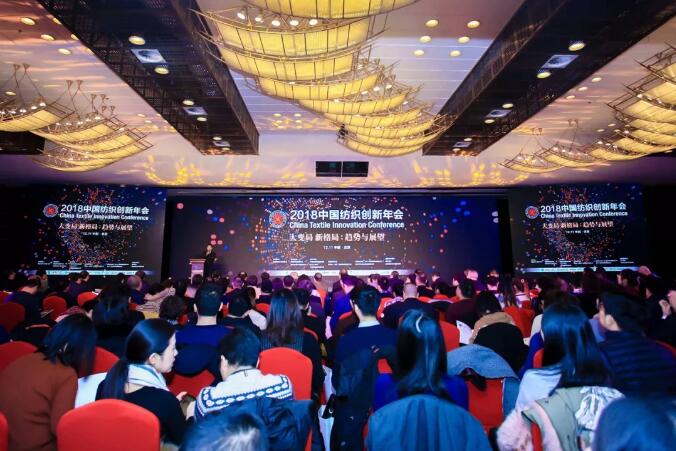
2018 China Textile Innovation Conference was held on December 11th in Beijing. With the theme of “Big Change • New Pattern: Trends and Prospects”, the conference this year focused on the new pattern of China’s textile industry in the new era, including the changes of internal structure, operational logic and value model of the economy, the development of new entrances, new interfaces, and new markets, as well as the integration of cross-border innovative thinking and the construction of enterprise value chain system. Moreover, the conference also discussed how to put the new positioning of “technology, fashion and green” into practice and explored the feasible path of high-quality development.

Chen Dapeng, Vice President of CNTAC, moderator of the conference
The conference was sponsored by China National Textile and Apparel Council (CNTAC), co-organized by China Textile Information Center and China Textiles Development Center, and supported by China Fashion Creative Valley, COLORO™, TAICHI Stone Co., Ltd., Cotton Incorporated, TESTEX Beijing, SANTEX RIMAR Shanghai Textile Machinery Co., Ltd., and Zhejiang Yuhua Holding Group Co., Ltd.
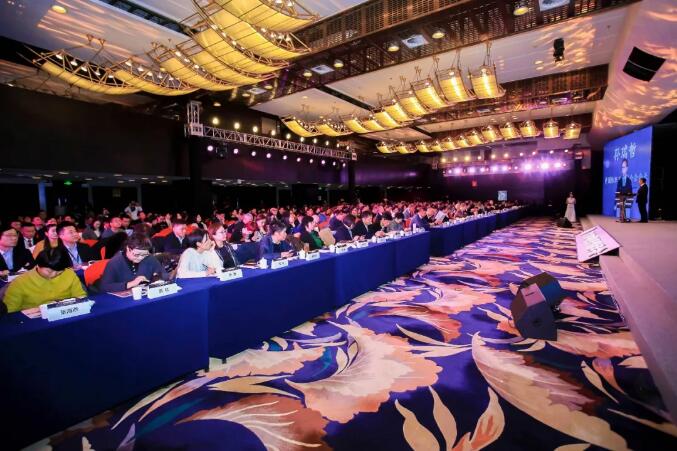
Deepening the “SANPIN” strategy (i.e. to increase variety, improve quality, and create brands) to promote the industry toward mid-to-high end
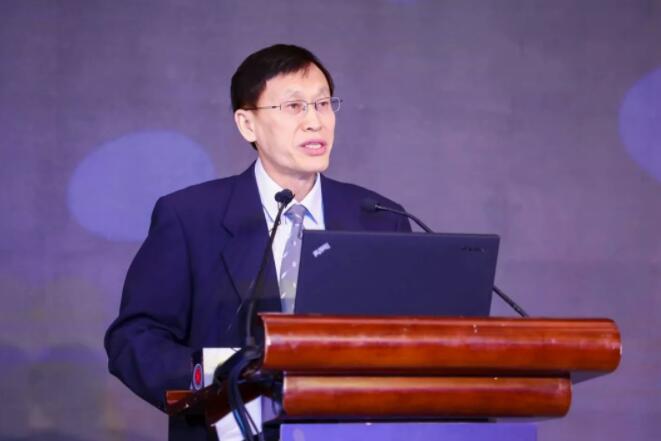
Gao Yanmin, Director of Consumer Goods Division of Ministry of Industry and Information Technology of the People’s Republic of China delivered a speech at the conference, pointing out that China’s textile industry has shown a steady and advancing development trend. The long-term positive industrial economic fundamentals and continuous innovation & transformation have become a ballast stone and power source that stabilizes expectations and boosts confidence. In the face of a stable and changing environment, the industry must maintain its strength and strengthen its confidence. Secondly, the textile industry should carry out in-depth implementation of the strategy of increasing varieties, improving quality, and creating brands. Focusing on the supply-side structural reform, the quality of the supply system should be the main direction, and the optimization of industrial structure should be strengthened to make up for the shortcomings and create new advantages, driving the textile industry to the middle and high end. At the same time, it is also required to deploy an innovation chain around the industrial chain and deploy a capital chain around the innovation chain. Enhancing the innovation drive will help actively transform the growth momentum, and accelerate the construction of various innovative application demonstration platforms and textile industry innovation systems. In addition, we must adhere to the innovation work with the enterprise as the mainstay, the market as the guide, and strengthen the construction of innovative talents in production, education and research. It is also a must to make full use of the innovative resources of the international and domestic markets, pay attention to the introduction, digestion and re-innovation, and attach importance to the protection of intellectual property rights.
Responding to the big change to reshape the new pattern

Sun Ruizhe, President of China National Textile and Apparel Council, made a keynote speech at the conference, comprehensively summarizing the tremendous development achievements of China’s textile industry in the 40 years of reform and opening up from a global perspective. He pointed out that in the midst of the big changes of uncertainty, asymmetry and instability, the world economy is deeply connected, the interest pattern is becoming more complex, the industrial ecology is rapidly evolving, and the knowledge economy is reshaping the structure. A high-quality development pattern, a high-potential consumption pattern, a high-level open pattern, a high-intensity innovation pattern, and an efficient market structure have been formed in China. Under the new situation, China’s textile industry has accelerated its transition to a high-quality development track and has become the backbone of maintaining stable economic operations. Its internal structure, operational logic and value model have undergone profound adjustments. He also pointed out that in response to the big change, the industry needs to maintain its strength and stimulate its vitality, and find a good position in the development coordinate system of technology and rules with a new perspective of scale, long-term, design and boundary. In addition, we must adapt to the changing situation to deepen industrial innovation with quality as the core, strengthen external cooperation with openness, create an industrial community with synergy as the point of departure, promote fashion development with culture as the basis, and improve social responsibility with sustainability as the standard, in order to build a bright future for the industry in terms of science, fashion, and sustainability.
Blending cross-border wisdom to explore innovation and development
In the theme forum, well-known experts from Microsoft and JD.com, and representatives of pioneering textile and garment entrepreneurs, explored the changes and development trends in the future digital technology and consumer market from the perspectives of new technologies, new materials, new retail, new models, and new forms, sharing the practical experiences of cutting-edge technology innovation applications, enterprise management innovation construction and brand transformation and upgrading.
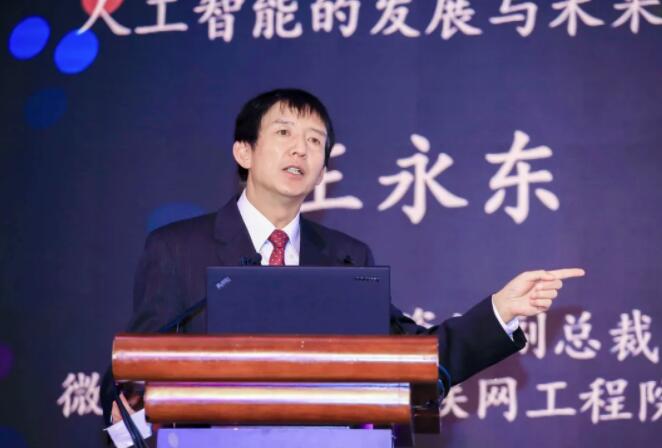
Wang Yongdong, Global Senior Vice President of Microsoft and President of Microsoft STC, talked about the development and future of artificial intelligence. He introduced the development stages and trends of artificial intelligence and pointed out that all applications in the future will depend on a cloud-to-edge, ubiquitous computing environment. Today, the world is slowly becoming familiar with the use of the various AI services offered through the cloud to develop the broadest range of customizable artificial intelligence technologies. Artificial intelligence learns and absorbs a large number of outstanding works of art and design in human history, and transforms it into its spiritual and design power. “Microsoft artificial intelligence sisters” Xiao Na and Xiao Bing are popular AI technologies. He revealed that the artificial intelligence fashion design platform jointly built by Microsoft and China National Textile and Apparel Council will be unveiled in the near future. He also said that he hopes to promote interoperability in the industry through leading and cooperation, so that any framework can run on any chip and any edge device, making artificial intelligence development easier and at your fingertips.
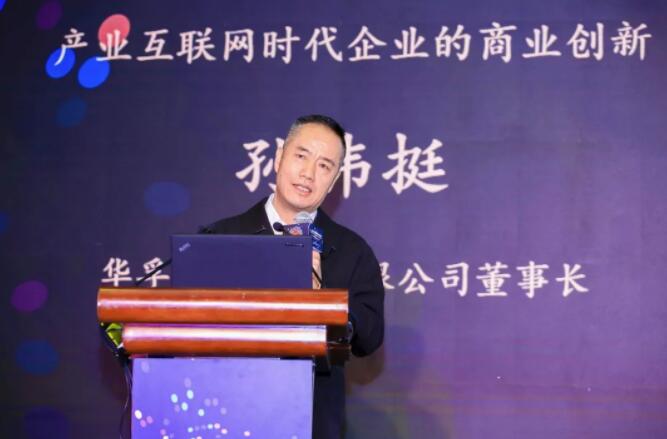
Sun Weiting, Chairman of Huafu Fashion Co., Ltd. gave a keynote speech about business innovation in the Industrial Internet Age. He pointed out that the essence of the industrial Internet is the deep integration of industry and the Internet under the conditions of new technology, and has been a focus at present. Consumer Internet makes consumption cheaper and more convenient, and making business easier. For the industry, the fragmentation of orders, consumption personalization and randomization, market volatility, and uncertainty make sales and production more difficult. He believes that for the industry, the flexible supply chain is a required question to find the best results of scale order, no-overstock inventory, and full capacity utilization. Flexible supply chains face such three levels as manufacturing flexibility, organizational flexibility, and digital flexibility. Digital flexibility is the ideal side, and the industrial Internet is the inevitable choice. In addition, he also introduced that after 25 years of development, Huafu has formed its own unique business model and comparative advantages through trend-oriented, innovation-driven, leading marketing and scale customization.

Wang Limin, Chairman of Huafang Co., Ltd., gave a keynote speech on the theme of “Transformation and Upgrade, Innovation and Development” and the actual development of Huafang. He said that the survival of enterprises must rely on the internal factors of corporate culture and the external factors of market development, and advance with the times to realize the replacement of old growth driver for the new one. Based on the improvement of equipment level, Huafang has achieved technological breakthroughs and improved total factor productivity. Taking market demand as the starting point, and brand as the core, it has witnessed market breakthrough. The company has enjoyed successful transformation and upgrading through technological innovation, fashion globalization, building green industrial chain, and transforming to Internet +, etc. The industrial chain guarantee system consisting of the development strategy of “one body and two wings”, the global market and industrial transfer of independent brand building, and the increasingly perfect quality control system has promoted the upgrading of products. He also introduced that since the establishment of Huafang for 42 years, it has realized the transformation from a single manufacturing industry to a diversified business model. At present, the company’s annual dyeing and printing fabric production capacity is 350 million meters, the annual home textile output capacity is 20.7 million pieces (sets), and the apparel production capacity is 3 million pieces.

Qiu Zhiping, Executive Deputy General Manager of PGTEX, introduced the development of manufacturing and application technology systems of low-cost and industrialized carbon fiber composites. In view of the development and application of new technologies and new materials in the industry, he said that although textile technology has already applied new materials to the field of industrialization, compared with the high-end applications of carbon fiber abroad, there is still a big gap in China. The main problems affecting the development of the industry are: the lack of low-cost manufacturing technology systems in the downstream application industry, and the blank in raw material design tooling molds and related simulation fatigue testing. In order to lead the development of carbon fiber innovation, PGTEX not only established a big data platform for composite structure design, but also established a technical system integrating R&D, design and manufacturing, and a collaborative platform for integration of R&D and design, which greatly reduced product development costs and shortened the development cycle, bringing to the development of the new energy industry a composite application solution for lightweight, low-cost, and industrial production.
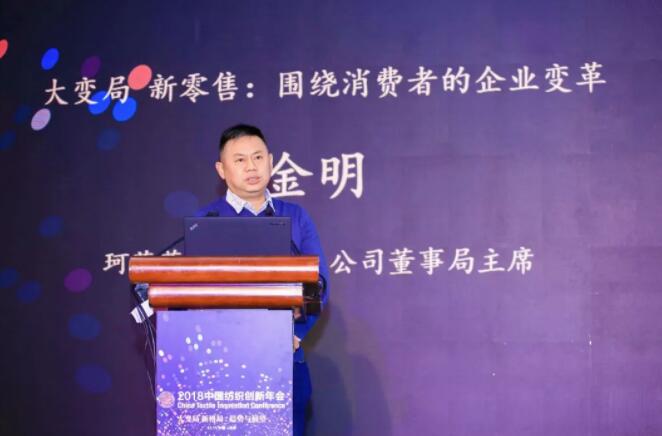
Jin Ming, Chairman of the Board of Directors of Koradior, gave a keynote speech about business transformation around consumers. He said that traditional retail is mainly the order of goods, fields and people. With the reconstruction of business logic, it gradually evolved into the order of people, goods and fields, that is, new retail. Instead of blindly producing goods, the market first uses cloud computing, the Internet, big data to count users’ consumption needs and consumption characteristics, and uses these data to design products’ styles, features, and forms. Then it will be put into production and launched based on market trends. The essence of new retailing is from “commodity-centered” to “consumer-centered”, paying more attention to consumer demand for product personalization and quality, as well as a scene-oriented, efficient and convenient shopping experience.
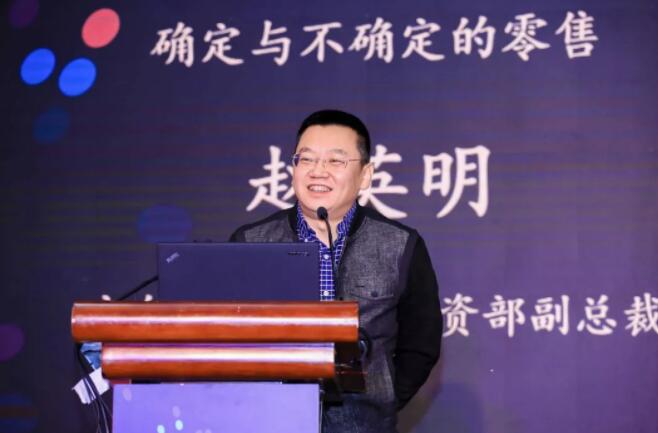
In the face of the current market structure, what are the thinking and exploration of Internet companies? At the conference, Zhao Yingming, Vice President of the Strategy and Investment Department of JD Group, gave a keynote speech entitled “Certain and Uncertain Retailing”. He said that the retail industry is at a turning point in the great changes, while changes in consumer subjects, changes in consumption patterns and changes in consumption channels have brought about tremendous changes in the retail industry. He believes that with the decline of the common consumption in the retail industry, personalized consumption is evident. When studying the retail industry, it is necessary not only to study Chinese consumers, but also to study in every city and every region. He also pointed out that the first half of the Internet is the era of staking when technology decides the business, and the second half comes the era of siege when the business decides technology. Today’s retail consists of a WeChat business ecology, an e-commerce ecology, and an offline ecology. The change in retail comes from technology and the transformation of commodities, and the future retail will be “unbounded retail”, ubiquitous, omnipresent and omnipotent.
Award Ceremony


At the conference, Xia Lingmin, Vice President of the China National Textile and Apparel Council, read the awarding notice and decision of China National Textile and Apparel Council, followed by the awarding ceremony of “Fabrics China Trend Forecast & Promotion Alliance Enterprises”, “Industrial Design Center of China’s Textile Industry” and “Cultivation & Promotion of 2018 Top Ten Innovative Textile Products”, and 2018 CNTAC Product Development Contribution Awards”.
